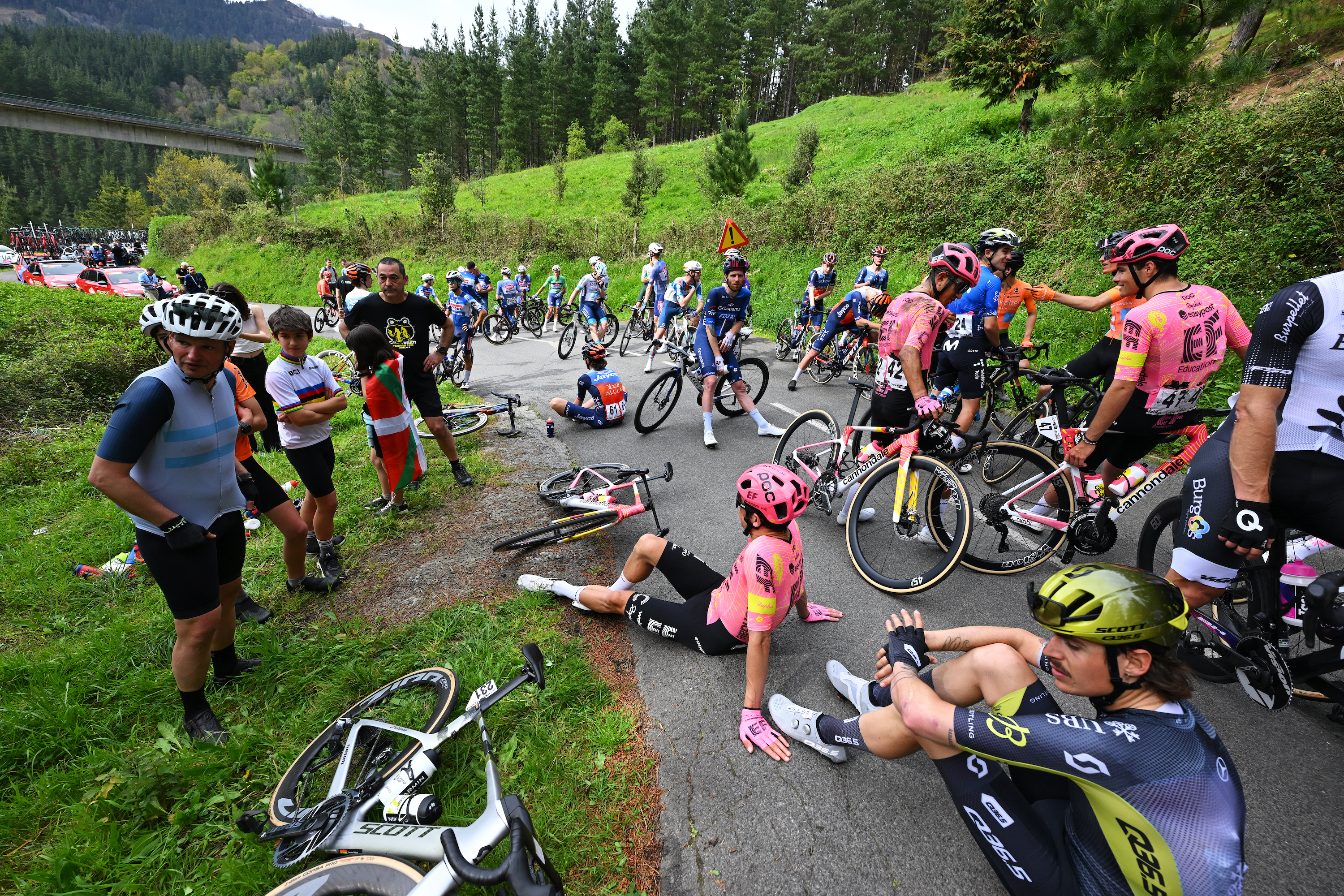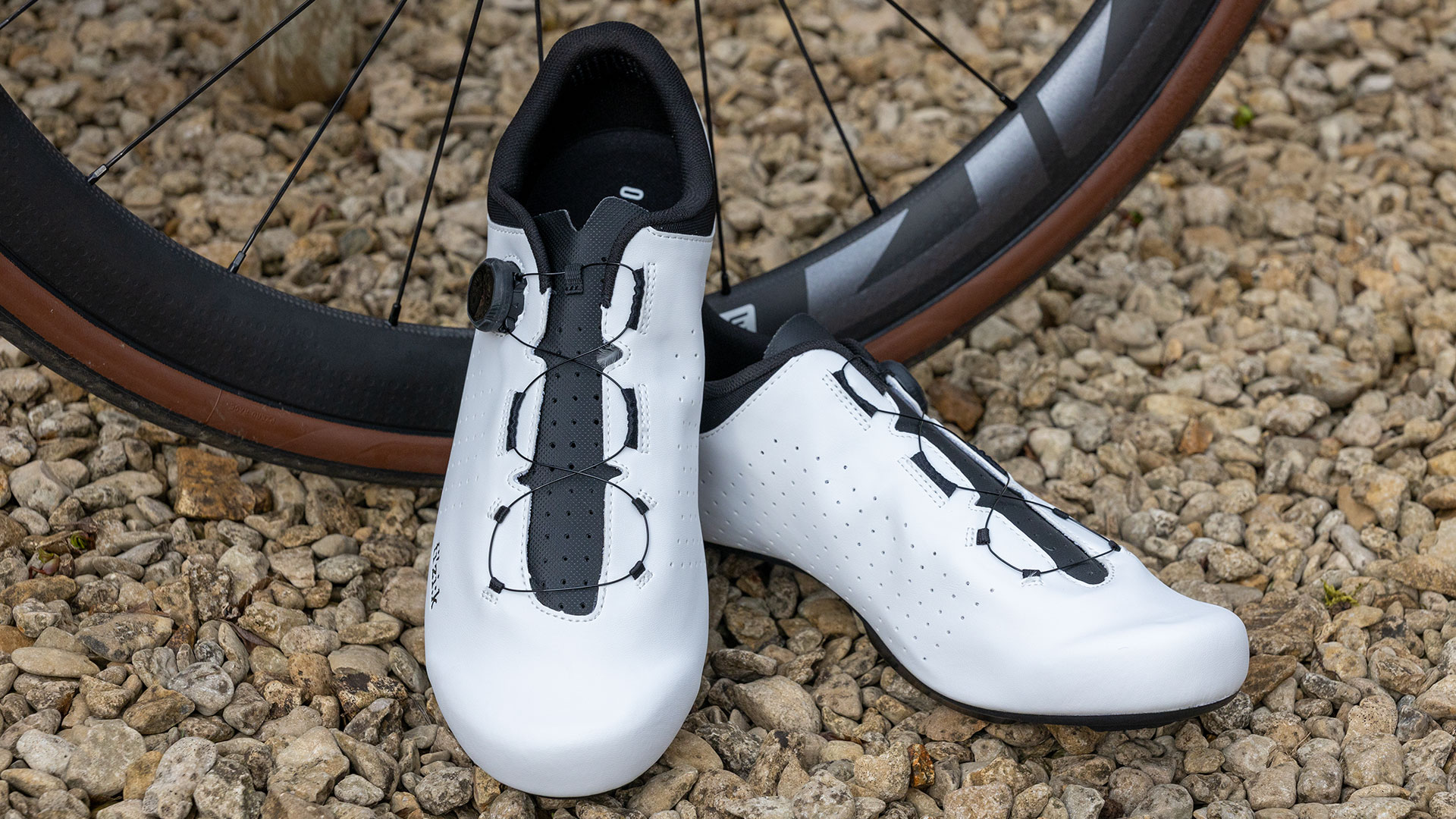Formula 1 stopped its drivers dying, what is professional cycling doing to prevent serious crashes?
As race organisers meet to discuss rider safety, it's clear that change is needed



News editor at Cycling Weekly, Adam brings his weekly opinion on the goings on at the upper echelons of our sport. This piece is part of The Leadout, a newsletter series from Cycling Weekly and Cyclingnews. To get this in your inbox, subscribe here. As ever, email adam.becket@futurenet.com - should you wish to add anything, or suggest a topic.
In the history of Formula 1, there have been 32 deaths in races, but only one this century, that of Jules Bianchi in 2015 (he crashed the previous year). The last decade - with the Halo safety device in use since 2018 - has seen a raft of changes to how races are run, how drivers are protected, and how the cars themselves look, all in response to the danger that was facing the sport’s athletes.
Road cycling is hard to compare. There are more race days at the highest level, it is raced in the real world, not on closed circuits, with more people involved; in some ways, it is harder to protect riders, but speeds are slower. Coming up with a total number of deaths would be difficult. Just in the last five years, there have been the high-profile deaths: Bjorg Lambrecht, Gino Mäder, André Drege and most recently, Muriel Furrer.
Furrer’s death, at the World Championships, is still under investigation by Swiss authorities, but is possibly the most shocking of all, given it was at the UCI’s biggest event, on a circuit course, and it happened to an 18-year-old.
We cannot compare cycling directly to F1, and expect the same measures to be effective. But it is not outrageous to ask what is actually being done to improve the safety of the sport. Riding a bike comes with dangers, for amateurs as much as professionals, but on closed roads, in semi-controlled circumstances, it should be possible to envisage a future with fewer deaths and fewer serious accidents.
After Mäder’s death in 2023 at the Tour de Suisse, the SafeR initiative was set up, to help improve safety in professional cycling and is overseen and funded by a number of pro cycling organisations, including the UCI (Union Cycliste Internationale, the sport’s governing body), the CPA (Cyclistes Professionnels Associés) riders association, the AIOCC (International Association of Cycle Race Organisers) race organiser group, the UNIO women's team association and the AIGCP (Association International des Groupes Cyclistes Professionels) teams group.
However, change has been slow, and incidents have not abated. According to Procyclingstats’ running tally of injuries per season, which dates back to 2014, 2024 was the worst year, with 306 injuries, more than 296 last year, and much more than the 247 of 2023. This might be partly down to improved reporting of crashes, and some are non-crash related. but the numbers are not heading downwards, as they need to do. April’s crash at Itzulia Basque Country was notable, not just for the high-profile victims, but the severity of the injuries caused. It is unsustainable.
SafeR has already been through a couple of bosses, with one being forced out due to inaction, and 18 months on, it appears to have done little. There have been small changes, like mattresses protecting key points at the Tour de France, and a chicane being introduced to the run-in to the Arenberg Forest at Paris-Roubaix, but nothing decisive, nothing impactful.
Get The Leadout Newsletter
The latest race content, interviews, features, reviews and expert buying guides, direct to your inbox!
Last week, the race director of the Tour de France, Christian Prudhomme, laid the blame at increased speeds, something which he implied was the fault of riders themselves, as much as race organisers. The Tour, as well as Classics like Paris-Roubaix were faster than ever this year, but not by a huge margin - 1km/h faster at most - not by an amount which would suggest they are out of control, there seems to be limited evidence that it is increased speeds that are the issue.
“Beyond the behavior of the athletes and the work of the organisers, it is absolutely necessary to reduce speed by appropriate measures: the riders are going too fast," Prudhomme said.
"The faster they go, the greater the risk and the more they endanger themselves and others. We already said it here last year: our car and motorbike drivers no longer have a safety margin! Imagine the consequences if one of our drivers, subjected to too much pressure, lost control on a descent from a pass or when racing through a built-up area."
In response, EF Education-EasyPost’s team boss, Jonathan Vaughters, wrote on X: “It is absolutely infuriating to me how these fat cats, who have never raced so much as a child’s tricycle, turning tens of millions in profit off the backs of others; squarely throw the blame of safety issues in cycling on the riders.
“They [the riders] are highly competitive people. They are hard wired to the bone to take life threatening risks. Similar to F1 drivers. And like in F1, the answer is to create a safer environment around them. Because they will always push the envelope as far as it goes.”
If riders are going too fast, I don’t think it is up to them to slow down, but for the powers in sport to make changes that force riders to be safer. It should be noted that Prudhomme has spoken out on this issue before, picking out disc brakes as one fault, but little has changed. There must be a way to use safer routes, to force people to be slower in dangerous areas, to discourage rash behaviour if it happens. As riders are travelling at speeds of over 40km/h, merely protected by a bit of lycra and a helmet, avoiding crashes should be a priority.
Other suggested changes, like removing race radios from races, a pet project of UCI president David Lappartient, seem to be aimed at making racing “more exciting” than safer really, given radios could be a great help in times of danger. The focus does not appear to be on the right areas.
I do not have the answers, but there are too many incidents, too many deaths. I have had enough of writing about dark days in a sport I love. Formula 1 changed to minimise serious accidents. It’s time cycling changed too.
This piece is part of The Leadout, the offering of newsletters from Cycling Weekly and Cyclingnews. To get this in your inbox, subscribe here.
If you want to get in touch with Adam, email adam.becket@futurenet.com.

Thank you for reading 20 articles this month* Join now for unlimited access
Enjoy your first month for just £1 / $1 / €1
*Read 5 free articles per month without a subscription

Join now for unlimited access
Try first month for just £1 / $1 / €1

Adam is Cycling Weekly’s news editor – his greatest love is road racing but as long as he is cycling, he's happy. Before joining CW in 2021 he spent two years writing for Procycling. He's usually out and about on the roads of Bristol and its surrounds.
Before cycling took over his professional life, he covered ecclesiastical matters at the world’s largest Anglican newspaper and politics at Business Insider. Don't ask how that is related to riding bikes.
-
 Man hands himself in to Belgian police after throwing full water bottle at Mathieu van der Poel during Paris-Roubaix
Man hands himself in to Belgian police after throwing full water bottle at Mathieu van der Poel during Paris-Roubaix30-year-old was on Templeuve-en-Pévèle cobbled sector when television pictures showed the bottle hitting him in the face
By Tom Thewlis Published
-
 Fizik Vento Omna Wide shoe review: Yeti sneakers for those pedalling on a budget
Fizik Vento Omna Wide shoe review: Yeti sneakers for those pedalling on a budgetBroadly recommended for those of us with flipper feet
By Simon Fellows Published